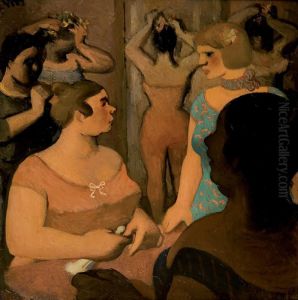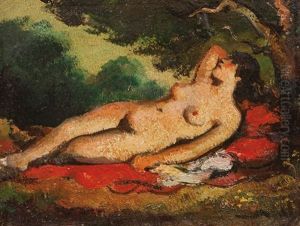Vratislav H. Brunner Paintings
Vratislav Hugo Brunner, often recognized for his contributions to graphic design, illustration, and book art, was a Czech artist born on August 14, 1886, in Prague, which was then part of the Austro-Hungarian Empire. He was a prominent figure during the early 20th century, particularly noted for his involvement in the Art Nouveau and Art Deco movements. His work is characterized by its elegant lines, innovative typography, and ornamental quality, which was typical of the decorative arts during that period.
Brunner received his artistic education at the School of Applied Arts in Prague, studying under significant Czech artists such as Karel Špillar. He later continued his education in Paris, which was a global center for art and design at the time. The influence of French art and culture is evident in Brunner's work, which often combined elements of Parisian Art Nouveau with traditional Czech motifs.
During his career, Brunner worked in various mediums, including poster design, book illustration, and advertising. He was particularly well-known for his book designs, which often featured elaborate typefaces and layouts, as well as his ex libris designs, a popular form of personalized bookplate that denotes ownership. Brunner's ex libris works were sought after for their aesthetic quality and the way they reflected the interests or professions of the book's owner.
Brunner's posters and advertisements often promoted cultural events, such as theater productions and exhibitions, and commercial products. They are notable for their vibrant colors, stylized figures, and the integration of text and image. His work in this area helped to define the visual language of advertising in the early 20th century.
Tragically, Brunner's life and career were cut short when he died at the age of 42 on March 30, 1928, in Prague. Despite his relatively brief career, his work had a lasting impact on the fields of graphic design and illustration in the Czech Republic and beyond. Today, Brunner's designs are held in high regard and can be found in the collections of various museums and institutions dedicated to the decorative arts and design history.

